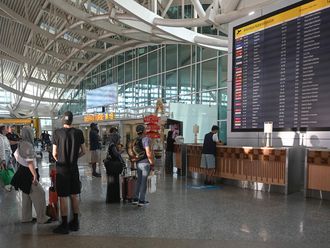New Delhi: The status of women in India has been subject to many great changes over the past few millennia. From equal status with men in ancient times through the low points of the medieval period, to the promotion of equal rights by many reformers, the history of women in India has been eventful.
In modern India, women have held high offices in India including that of the president, prime minister, speaker of the Lok Sabha and leader of the opposition. However, women in India at the same time continue to face atrocities such as rape, acid throwing, dowry killings while young girls are forced into prostitution.
The dichotomy of India is that women are being tortured as well as upheld as goddesses. Women have contributed in almost every field and made country feel proud at every occasion. They are in front, leading the country, making milestones and source of inspiration for many.
However, another reality of the Indian society is that there is systematic discrimination and neglect of women’s rights, which could be in terms of inadequate nutrition, denial or limited access to education, health and property rights, child labour and domestic violence etc. Widowed and divorced women have historically been shunned in all areas of India.
According to a global poll conducted by Thomson Reuters, India is the “fourth most dangerous country” in the world for women, and the worst country for women among the G20 countries.
Women’s empowerment in India is still a distant dream. In the 21st century, India is fast emerging as a global power but for half of its population, the struggle to live life with dignity continues.
“Women may be have stardom in any stream but are getting harassment every day by their surroundings. They are victims of crime directed specifically at them, rape, kidnapping and abduction, dowry-related crimes, molestation, sexual harassment, eve teasing, etc. Around 40 per cent of married women in India are victims of domestic violence. The increasing violence against women shown in television and films and their vulgar portrayal as objects of sex is also an important contributing factor in the escalating violence against women in India,” sociologist Kunal Aggarwal told Gulf News.
Further, the practice of dowry and the tag of “paraya dhan” (women being property of the second family) translate into daughters being considered an economic liability. In Indian society, it is widely accepted that within the family, the man is the master and the woman is the subordinate partner. The societal pressure forces women to maintain this status quo. Wife beating is the most prevalent form of violence against women in the Indian society and it is viewed as a general problem of domestic discord.
According to National Crime Bureau, 150,000 crimes against women are registered annually on an average, out of which nearly 50,000 are related to domestic violence in their homes.
“Though the status of women in India, both historically and socially, has been one of the respect and reverence, but the hard truth is that even today, they are struggling for their own identity, shouting for diffusion of their voices and fighting for their own esteem. Despite the constitutional guarantee of equality of sexes, rampant discrimination and exploitation of women in India continues,” Aggarwal adds.












